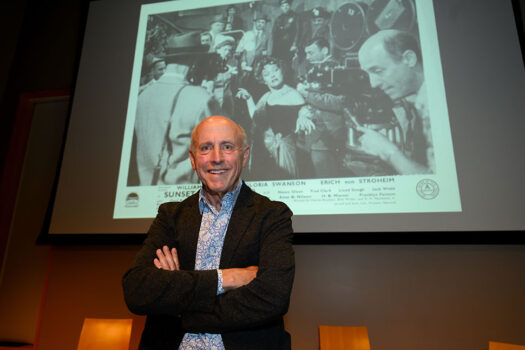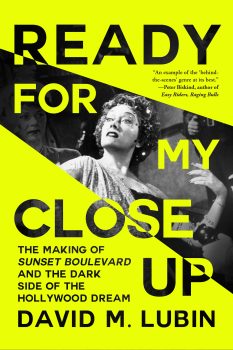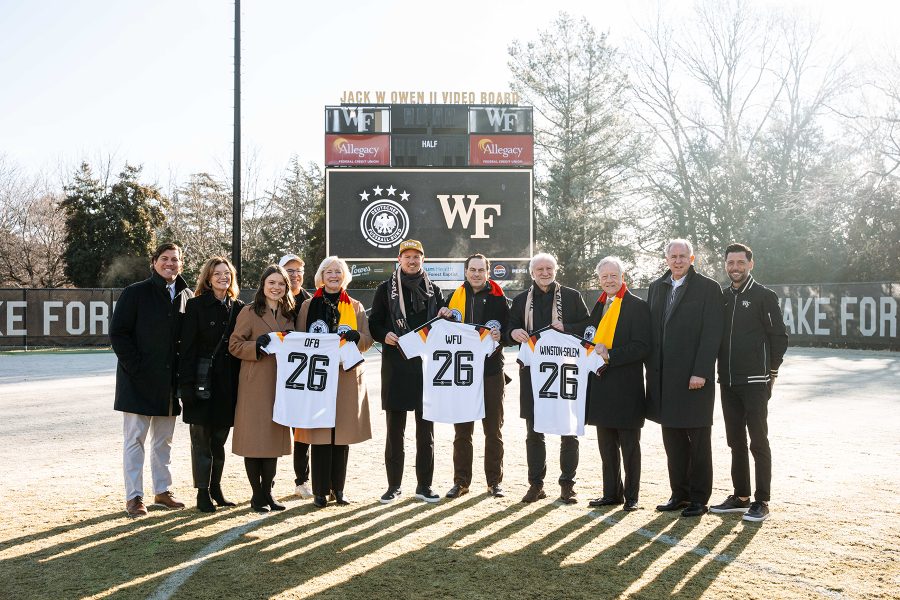As classic film ‘Sunset Boulevard’ celebrates its 75th, WFU expert’s new book garners national attention
"All right, Mr. DeMille, I'm ready for my close-up." - Norma Desmond

In “Sunset Boulevard” (1950), Gloria Swanson plays a faded star of the silent screen, Norma Desmond, who lives in her decaying mansion in Los Angeles. Norma sees an opportunity to make her return to the big screen, with tragedy to follow.
Professor Emeritus of Art History David M. Lubin is drawing national attention with his forthcoming book, “Ready for My Close-Up: The Making of ‘Sunset Boulevard’ and the Dark Side of the Hollywood Dream.” Set to release on August 12, the upcoming publication is generating coverage in major media outlets, underscoring its contribution to film history and American culture.
The movie resonated with Lubin’s students, and several reviewed and shared feedback on the book in its draft form.

“I won’t ever forget seeing Norma Desmond’s face on the movie screen, and it is thrilling to now see that face on a book,” said Ava Cofiell, a 2024 Wake Forest graduate and one of Lubin’s former students.
“Sunset Boulevard” is celebrating its 75th anniversary with a special theatrical re-release playing in over 1,000 theaters nationwide on August 3 and 4.
“Ready for My Close-Up” offers readers a behind-the-scenes look at Billy Wilder’s 1950 cinematic masterpiece, “Sunset Boulevard.” Pre-release coverage highlights the book’s detailed research and insightful analysis of the film. The book made The Wall Street Journal’s list of “Summer books to get lost in,” and the LA Times’ list of “30 Must-Read Books for Summer.”
Lubin spoke with People magazine and has been interviewed on CBS Saturday Morning and NPR’s All Things Considered. The Wall Street Journal published a book review.
“When I started teaching film history, I’d show ‘Sunset Boulevard’ and students always reacted strongly to it,” Lubin told Publisher’s Weekly. “They actually identified with the characters of washed-up movie star Norma Desmond and down-on-his-luck screenwriter Joe Gillis, especially with the way that Desmond bends herself out of shape to look beautiful and young. ”
For more than two decades, Lubin taught courses on the history of art, film and popular culture at Wake Forest. “I have made a point of involving my students in my research and writing, asking them to read and critique work in progress.”
In an interdisciplinary honors seminar co-taught by English professor Barry Maine, Lubin shared chapters from his book-in-progress. “As a collaborative art historian, David seeks as many eyes on a topic as he can find,” said Maine. “From his perspective, the ‘meaning’ of a work of art cannot be independent of how viewers perceive it.”
“I appreciated Professor Lubin’s commitment to reminding our class that there is always something to be learned from listening to others’ ideas and perspectives – even a professor from his students.” – Bridget Quinn (‘23)
“Professor Lubin wanted and respected our entire class’s input, offering us the opportunity to give our thoughts on specific sections of his book, said Cofiell. ”I had no idea then how significant an impact this might have had on the book.”
In addition to “Ready for My Close-Up,” Lubin has published books on American art, film and popular culture. His book “Shooting Kennedy: JFK and the Culture of Images” (2003) won the Smithsonian Institution’s Charles C. Eldredge Prize for distinguished scholarship in American art. He is a Guggenheim Fellow and an NEH Public Scholar. He has written about art and World War One in “Grand Illusions: American Art and the First World War” (2016), and explored social class, social mobility, migration and other issues in “Titanic” (1999). He is also the author of “Picturing a Nation: Art and Social Change in Nineteenth-Century America” (1994) and “Act of Portrayal: Eakins, Sargent, James” (1985).



